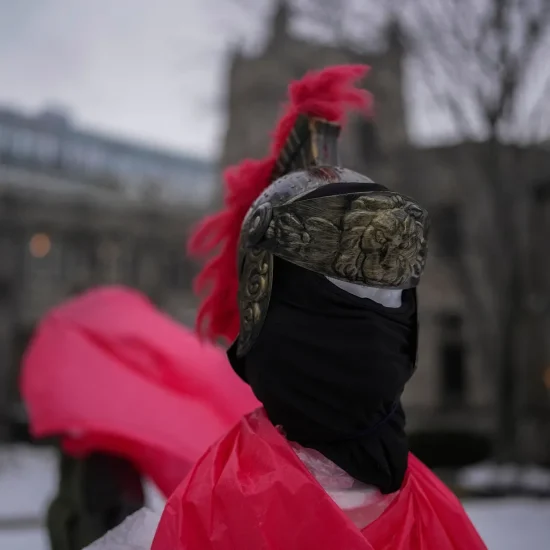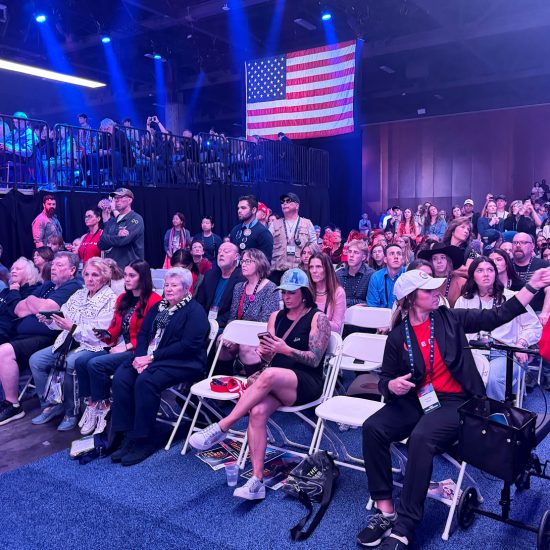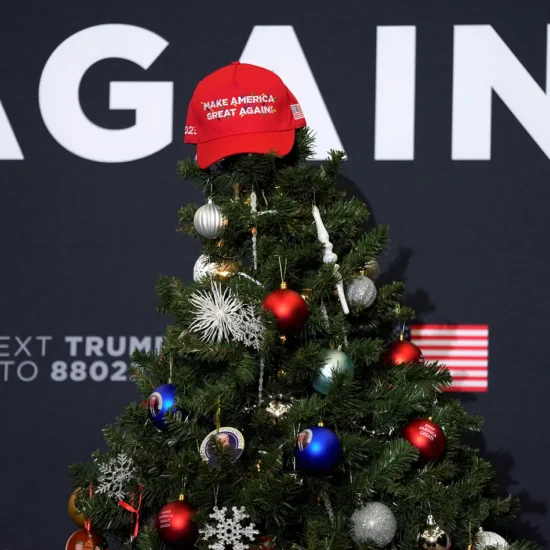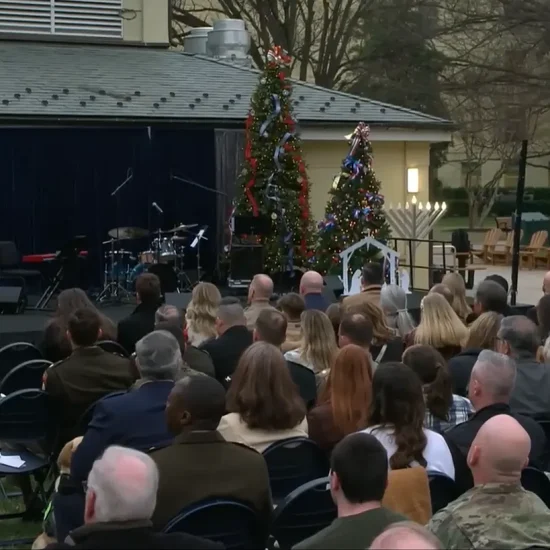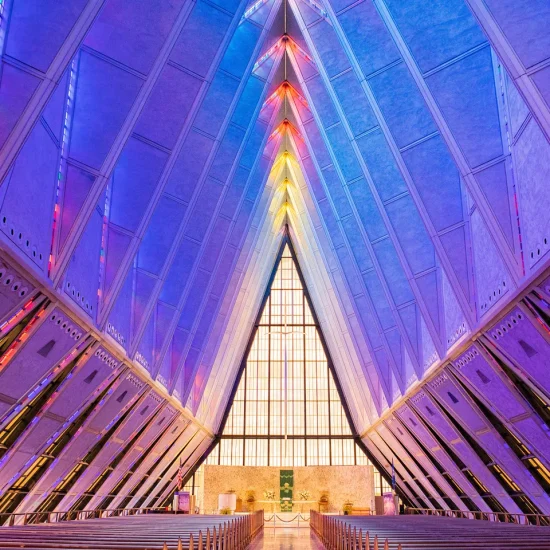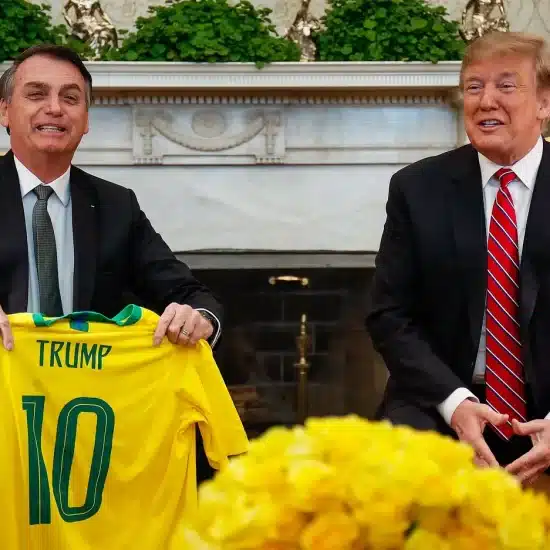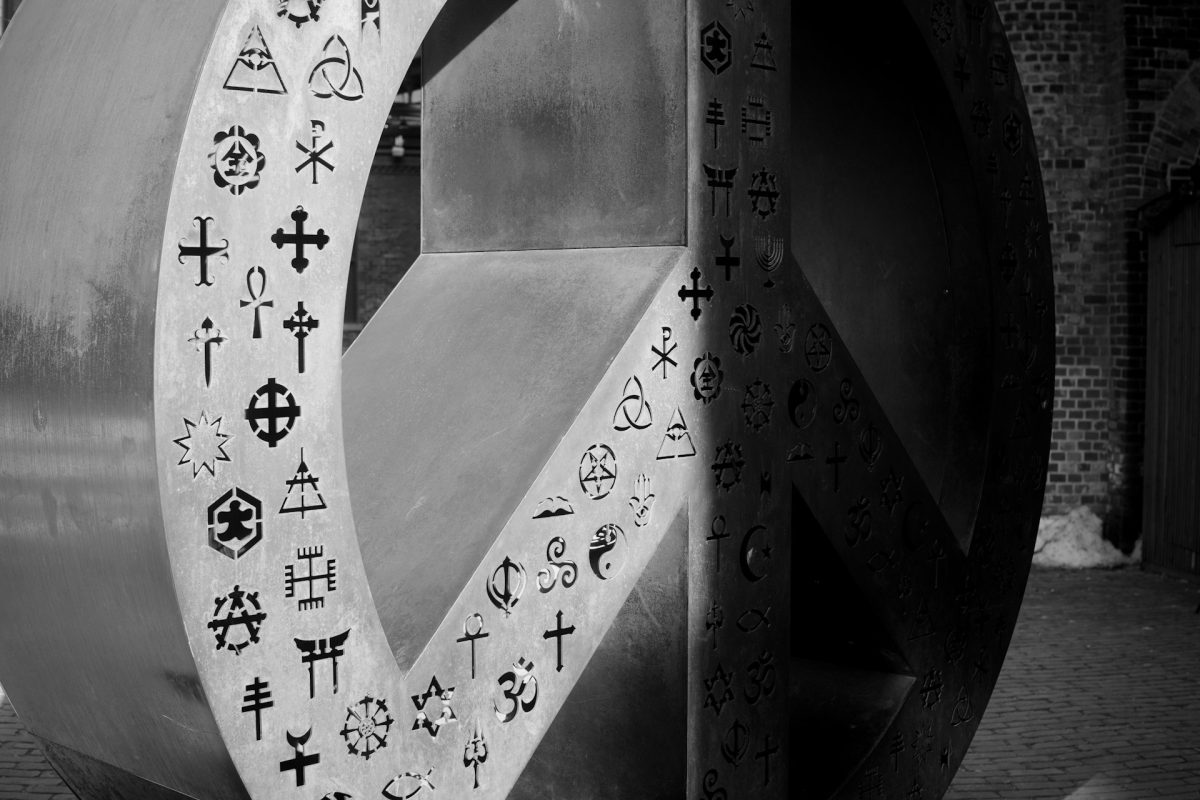
“Religious nationalism, like authoritarianism, is a political dynamic … when leaders want to consolidate authoritarian power, they bind themselves tightly to ultraconservative religious leaders … to fortify autocratic power … [and] squelch criticism of their kleptocracy.” –Katherine Stewart, Investigative Journalist/Author on Faithful Politics podcast.
On May 1, 2025, surrounded by ultraconservative religious leaders, President Donald Trump signed an executive order in the Rose Garden on the National Day of Prayer establishing the Religious Liberty Commission — a body that, on paper, claims to defend the religious freedom of all Americans. It’s the latest in a string of initiatives Trump has pursued since winning the election on Christian Visibility Day, all under the banner of protecting religious liberty.
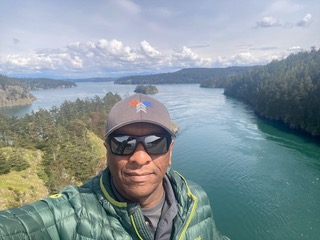
Will Wright
These initiatives include the creation of a White House Faith Office to support religious institutions, a Task Force to Combat Anti-Christian Bias led by Attorney General Pam Bondi, and executive orders rolling back diversity mandates and redefining gender in line with conservative Christian views. The Religious Liberty Commission — chaired by Texas Lt. Gov. Dan Patrick and vice-chaired by Ben Carson, both outspoken Christians — makes clear which religious perspectives are being prioritized. And while the commission’s mandate is to “vigorously enforce the historic and robust protections for religious liberty enshrined in Federal law,” history reminds us that “religious liberty” can mean very different things depending on who gets to define it.
To understand why this matters, let’s take a trip in the way-back machine. (Cue Wayne’s World flashback sound)
Flashback: Religious Liberty After 9/11
A little over one year after 9/11, the Patriot Act was signed into law. While most public debate focused on surveillance powers and national security protocols, buried in that legislation was something unexpected: a formal acknowledgment by Congress that Arab, Muslim, and South Asian Americans were being unfairly discriminated against.
SEC. 102. SENSE OF CONGRESS CONDEMNING DISCRIMINATION AGAINST ARAB AND MUSLIM AMERICANS.
(a) Findings — Congress makes the following findings:
(1) Arab Americans, Muslim Americans, and Americans from South Asia play a vital role in our Nation and are entitled to nothing less than the full rights of every American. (2) The acts of violence that have been taken against Arab and Muslim Americans since the September 11, 2001, attacks against the United States should be and are condemned by all Americans who value freedom. (3) The concept of individual responsibility for wrongdoing is sacrosanct in American society, and applies equally to all religious, racial, and ethnic groups. (4) When American citizens commit acts of violence against those who are, or are perceived to be, of Arab or Muslim descent, they should be punished to the full extent of the law. (5) Muslim Americans have become so fearful of harassment that many Muslim women are changing the way they dress to avoid becoming targets. (6) Many Arab Americans and Muslim Americans have acted heroically during the attacks on the United States, including Mohammed Salman Hamdani, a 23-year-old New Yorker of Pakistani descent, who is believed to have gone to the World Trade Center to offer rescue assistance and is now missing.
These words weren’t from an activist or editorial. They were written into federal law.
Despite this recognition, one of the most egregious examples of post-9/11 religious discrimination unfolded in plain sight. At the Metropolitan Detention Center (MDC) in Brooklyn, dozens of Muslim, Arab, and South Asian men were arrested as “high-interest” suspects — not because of evidence, but because of who they were. Federal Government initiatives after 9/11, primarily carried out by the Department of Justice and Immigration Agencies, systematically targeted men from Muslim-majority countries.
The result? Solitary confinement. Verbal and physical abuse. Strip searches. Long-term denial of access to legal counsel or family. None were charged with terrorism. All were punished in ways that had more to do with fear than facts.
The Department of Justice’s own 2003 Inspector General report confirmed that many detainees were profiled based on religion and ethnicity. According to the FBI’s PENTTBOM case files, local law enforcement arrested individuals for carrying photos of landmarks like the World Trade Center — hardly incriminating, but enough to spark suspicion.
This kind of government-sanctioned profiling is exactly the sort of injustice a genuine, impartial Religious Liberty Commission should confront. If such a body had existed after 9/11 — one with real independence and courage — it might have helped check the abuses of power that followed.
Subscribe to the Faithful Politics Substack newsletter now!
A Commission for the Privileged
Fast forward to 2025. The newly formed Religious Liberty Commission claims to protect religious freedom, but its priorities tell a very different story. The executive order and accompanying White House fact sheet make no mention of protecting Muslims, Sikhs, Jews, or other historically marginalized groups. However, statements have been made by some members of the group on Christian television that did address other religions. Nevertheless, the document focuses almost entirely on grievances long championed by Christian conservatives: school prayer, vaccine mandates, and religious symbols on public property.
It doesn’t take much reading between the lines to see what’s going on. This isn’t a commission for religious liberty in the broad, constitutional sense. It’s a commission designed to protect Christian cultural dominance — particularly a version that feels itself losing ground in a diversifying society.
The commission is tasked with addressing “current threats to domestic religious liberty” and promoting “strategies to preserve and enhance protections for future generations.” But there is no focus on the actual threats facing many communities — surveillance of Muslim neighborhoods, burnings of Black churches, harassment of Sikh gurdwaras, or what most would consider a no-brainer, the rise of antisemitism. Instead, it focuses on institutional autonomy for religious groups already flush with political power, White evangelical Christians.
The inclusion of “attacks on houses of worship” in the executive order sounds broad, but the context reveals otherwise. The agenda assumes anti-Christian bias is the most pressing concern — even though hate crimes against Jewish and Muslim communities statistically outpace those against Christians. (Read: What the FBI’s Hate Crime Data Actually Shows)
This is not a commission built to prevent another MDC Brooklyn. It’s a commission crafted in response to a narrative of Christian persecution that is more political myth than measurable reality.
School Choice: Freedom or Endorsement?
I’ve touched on many of the commission’s priorities in past writings or on the podcast, but let’s focus here on one key area: school choice. Framed in the executive order as a cornerstone of religious liberty, it centers on “parents’ authority to direct the care, upbringing, and education of their children, including the right to choose a religious education.”
Sounds great in theory. And to be honest, when I spoke with Kevin Roberts, President of the Heritage Foundation, author of Project 2025 and a vocal advocate for school choice, he made a compelling case — so much so that it had me second-guessing what I’d been hearing about it. Heck, even made a YouTube short, because I thought it would be helpful (see below). Like any reasonable person, I figured it was worth digging into further and, as they say, doing the research.
According to the U.S. Department of Education’s Private School Universe Data (2019–2020), there are roughly 30,490 private K-12 schools in America, which overwhelmingly serve White and religious populations. Roughly 66.7% of private school students are White, compared to just 46.1% in public schools. Meanwhile, Black and Hispanic students are significantly underrepresented in private institutions. The same dataset shows that 66.3% of private schools have a religious affiliation — 19.1% Catholic, and 47.2% other religious — while just 14.6% are nonsectarian.
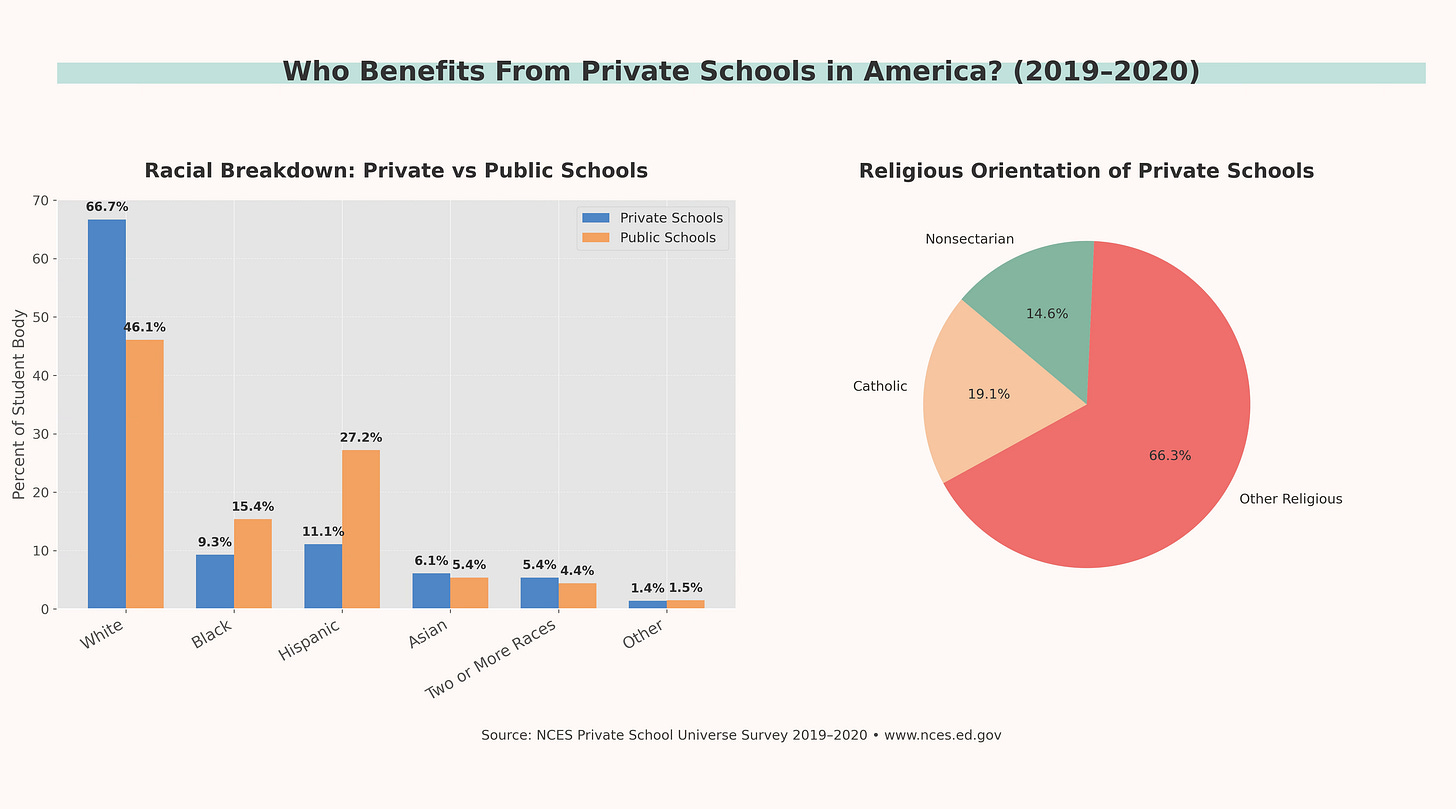
These numbers help contextualize which populations are most likely to benefit from universal school voucher programs, especially if the Trump administration is successful in expanding this program. If implemented nationally, such policies would overwhelmingly subsidize religious institutions — primarily Christian ones — where White students already constitute a strong majority.
And that’s the point. For many Christian conservatives, school choice isn’t just about education — it’s about preserving influence in a culture they feel slipping away.
Charter schools complicate the picture further. Though they are publicly funded like traditional public schools, charter schools are independently operated, often by nonprofit or for-profit organizations. They have greater flexibility in curriculum design, staffing, and school culture, though they’re still subject to certain accountability standards. Unlike private schools, they cannot [currently] receive direct religious funding or explicitly incorporate faith-based instruction — at least in theory.
However, a pending Supreme Court case, waiting an opinion, involving St. Isidore of Seville Catholic Virtual School could upend that precedent. If the Court permits this public charter school to operate as a religious institution, it would mark a dramatic erosion of the traditional church-state boundary. We plan to host Rachel Laser, President and CEO of Americans United for Separation of Church and State, on the program to discuss this case and others soon.
But honestly, we don’t have to look far — we’re already watching these boundary lines get pushed in real time. In our interview with journalist Alec MacGillis — whose 2025 ProPublica exposé traced the rise of Ohio’s universal voucher system — we learned how churches and religious advocacy groups strategically expanded school choice under the banner of civil rights. Originally pitched as a way to help poor children escape struggling schools, vouchers in Ohio have become a financial boon for well-funded religious institutions, many of which were already serving affluent families. As MacGillis detailed, these same institutions are raising tuition to match the growing value of publicly funded vouchers, effectively redirecting public funds into exclusive, ideologically aligned spaces.
This isn’t educational empowerment — it’s a slow, calculated effort to privatize public education, rooted in the belief that the government should fund faith-based instruction. The executive order establishing the Religious Liberty Commission makes that clear, stating: “In recent years, some Federal, State, and local policies have threatened America’s unique and beautiful tradition of religious liberty. These policies attempt to infringe upon longstanding conscience protections, [and] prevent parents from sending their children to religious schools.”
If that statement is the appetizer, the main course comes later in the order. Buried in Section 2(b)(iii) is a list of “specific topics to be considered by the Commission.” Unsurprisingly, it centers on “parents’ authority to direct the care, upbringing, and education of their children, including the right to choose a religious education,” as well as “permitting time for voluntary prayer and religious instruction” wait for it … “at public schools [emphasis added].”
If the Supreme Court sides with proponents in the St. Isidore case, it could open the door to even more of these arrangements nationwide, turning the exception into the rule.
Meanwhile, families with wealth and resources navigate these systems more easily, leaving behind students with disabilities, language barriers, or different faith backgrounds. In states like Arizona and Florida, most voucher money has flowed to White, suburban Christian schools, which means public funding is increasingly being used to support exclusionary spaces.
And what happens inside those schools? Science classes that omit evolution. History curricula shaped by biblical prophecy. Codes of conduct that exclude LGBTQ+ students and staff. And I’d be remiss not to mention this: some school superintendents have even submitted RFPs requesting $60 Bibles — with oddly specific requirements that just so happen to match the infamous Trump Bible. Yep, that one. At least they weren’t asking for the $1,000 collector’s edition signed by the man himself! But let’s be honest — many of the features they were looking for were lifted straight from that $60 version.
When public dollars fund these institutions, it’s not neutrality — it’s endorsement. And to say there isn’t already an entire ecosystem of Christian-made content and Christian-inspired history lessons designed for these schools is to miss the fact that much of it has already made its way into public classrooms — often without people even realizing it.
Subscribe to the Faithful Politics Substack newsletter now!
Public Dollars, Private Standards
These ideas aren’t just aspirational. Trump’s FY2026 budget proposal includes hundreds of millions for expanding charter schools, tax credit scholarships, and education block grants aligned with the vision laid out in Project 2025’s Mandate for Leadership. The proposal would dramatically grow the D.C. Opportunity Scholarship Program and establish federal ESAs — essentially a pipeline for public dollars to flow into private religious education.
The budget also echoes Project 2025’s demands: dismantling the Department of Education, shielding religious schools from accreditation oversight, and legally protecting school staff who object to using a student’s chosen pronouns on religious grounds.
The long-term vision? Turn education into a market where Christian institutions have the most leverage — and where the government funds them without holding them to public standards.
Segregation Academies and the Legacy of Resistance
To understand how we got here, we need to revisit Brown v. Board of Education (1954). That landmark case ended legal segregation in public schools — but it also triggered a massive backlash. In states like Virginia, White families responded by founding private, often religiously affiliated “segregation academies” to avoid integration.
The Stanley Plan in Virginia used public tuition grants to fund White students attending these schools, a strategy ruled unconstitutional in Griffin v. County School Board (1964). Institutions like Bob Jones University and Liberty Christian Academy carried this torch into the 1970s, maintaining racially discriminatory policies under the guise of religious liberty — until the IRS cracked down.
This moment, not Roe v. Wade, was the spark for the modern Religious Right. And today’s school choice movement — while less overtly racial — retains the same structure: using public funds to support institutions shielded from civil rights laws.
Supreme Court rulings like Carson v. Makin (2022) and Espinoza v. Montana (2020) have only accelerated this trend, requiring states to include religious schools in funding programs. These decisions blur the line between church and state, prioritizing institutional religious rights over student civil rights.
Religious Liberty — But for Whom?
This isn’t just about whether parents can send their kids to religious schools — they already can. The real issue is whether those schools should receive taxpayer dollars while remaining exempt from anti-discrimination laws.
When religious liberty is defined as the right of a school to exclude LGBTQ+ students, reject disabled children, or discipline non-Christian kids, we’ve lost the plot. That’s not liberty — it’s privilege, subsidized by the state.
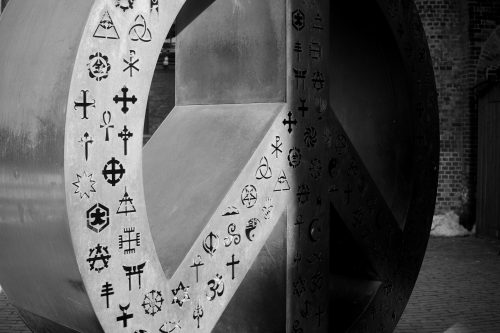
Photo of peace sign art featuring various religious symbols by Ryan Collins on Unsplash
If the Religious Liberty Commission were serious about protecting religious freedom, it would be advocating for all students, including Muslim, atheist, LGBTQ+, and disabled children, to receive an education free from coercion and bias. Instead, it’s laying the groundwork for a system where only one kind of religious identity gets government protection — and funding.
True religious liberty doesn’t play favorites. It ensures dignity for all, not dominance for a few.
What’s Really Going On Here: The Playbook of Manufactured Persecution
As I discussed in previously, there’s a recognizable pattern at play. Take, for instance, the recent case of St. Isidore of Seville Catholic Virtual School in Oklahoma. This proposed religious charter school, aiming to receive public funding, has sparked significant debate. Proponents argue it’s about expanding school choice and religious freedom, while critics contend it blurs the line between church and state, potentially setting a precedent for publicly funded religious education.
This situation exemplifies the broader strategy I discussed:
- Identify a local incident — in this case, a state’s decision on a charter school.
- Amplify it into a national debate on religious freedom and educational rights.
- Use it to push for policy changes that align with a specific ideological agenda.
The power of this approach lies in its ability to frame complex issues as straightforward battles over rights and freedoms, often sidelining nuanced discussions about inclusivity, equity, and the role of public funding.
What Real Religious Liberty Requires
Religious liberty should never be a tool for reinforcing power. It should be a safeguard for the vulnerable.
School choice, in theory, offers flexibility. As someone who’s homeschooled my children, I understand the value of autonomy in education. Charter and private schools can provide beneficial alternatives, especially for minority populations. However, when public funds support institutions that may exclude students based on religion, sexuality, or ability, under the banner of “freedom,” we risk redefining liberty to serve a narrow interest.
The concern isn’t with school choice itself but with its implementation without addressing historical and systemic inequities. The origins of school vouchers are intertwined with attempts to circumvent desegregation. Ignoring this history can lead to repeating past mistakes. And there are additional considerations: the impact on public schools, especially in rural areas, and the actual effectiveness of these programs. We anticipate more clarity on these issues with the upcoming release of the National Center for Research on Education Access and Choice (REACH) study.
Until then, I can only hope that a truly principled Religious Liberty Commission would live up to its stated goal of promoting equal access, civil rights, and genuine pluralism. After all, one of its own mandates calls for “programs to increase awareness of and celebrate America’s peaceful religious pluralism.” That’s a vision I fully support. And if I’m wrong in my concerns — if this commission proves to protect all faiths equally and uphold the spirit of the First Amendment — then I’ll gladly stand corrected. Because in the end, that would be a win not just for me, but for all Americans.
This article is the third entry in a series that originally appeared on the Faithful Politics Substack.
Will Wright is the Creator/Producer and host of the Faithful Politics Podcast. Each week Will (Democrat), and his cohost Pastor Josh Burtram (Republican) cover topics that intersect the world of faith and politics. You can follow him on Twitter @FaithfulPolitik or on Bluesky @faithfulpolitics.bsky.social.

